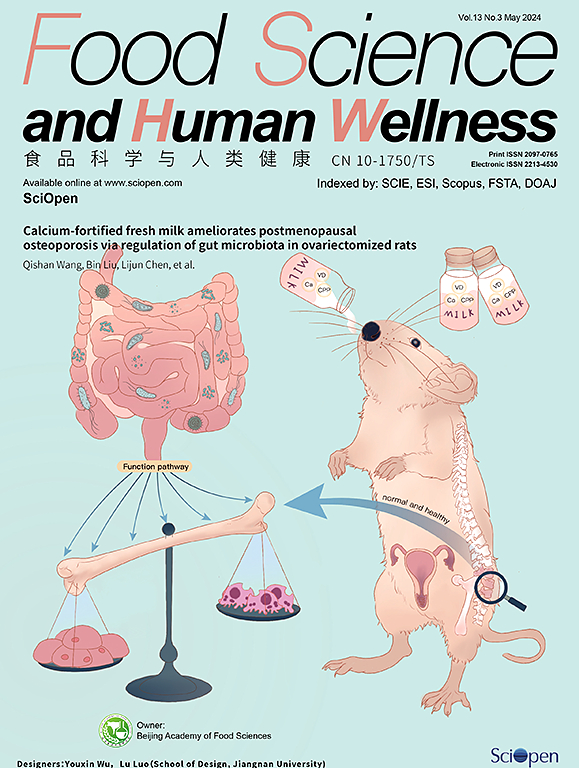Silver carp muscle hydrolysate ameliorated atherosclerosis and liver injury in apoE-/- mice: the modulator effects on enterohepatic cholesterol metabolism
IF 7.4
1区 农林科学
Q1 FOOD SCIENCE & TECHNOLOGY
引用次数: 0
Abstract
Atherosclerosis (AS) is a major cause of cardiovascular diseases (CVDs) and a strong link with hepatic steatosis. Silver carp muscle hydrolysate (SCH) possess various beneficial activities but its effect on AS and hepatic steatosis is yet unknown. This study aimed to investigate the effects of SCH on AS lesions and hepatic steatosis using apoE-/- mice. Results showed that SCH significantly reduced the vascular AS plaques and alleviated hepatic steatosis lesions in apoE-/- mice. Consistent with this, the lipid levels both in circulation and liver were lowered by SCH. The mechanism analysis showed SCH down-regulated the expression of genes involved in lipoproteins production while up-regulated the expression of genes related to reverse cholesterol transport (RCT) in liver. Meanwhile, SCH remarkably promoted transintestinal cholesterol excretion (TICE) process in intestine, partly contributing to the reduction of blood lipids. The peptide profile data indicated LYF, HWPW, FPK, and YPR are the main peptides in SCH that play a vital role in alleviating AS lesions and hepatic steatosis. Our findings provided new knowledge for the application of SCH in ameliorating CVDs and liver diseases.

鲤鱼肌水解物改善载脂蛋白E -/-小鼠的动脉粥样硬化和肝损伤:对肠肝胆固醇代谢的调节作用
动脉粥样硬化(AS)是心血管疾病(cvd)的主要原因,与肝脂肪变性密切相关。鲢鱼肌肉水解物(SCH)具有多种有益活性,但其对AS和肝脏脂肪变性的影响尚不清楚。本研究旨在探讨SCH对apoE-/-小鼠AS病变和肝脂肪变性的影响。结果显示,SCH可显著减少apoE-/-小鼠血管AS斑块,减轻肝脏脂肪变性病变。与此相一致的是,SCH降低了循环和肝脏的脂质水平。机制分析表明,SCH下调了肝脏中脂蛋白生成相关基因的表达,上调了肝脏中胆固醇逆向转运相关基因的表达。同时,SCH显著促进了肠道内的经肠胆固醇排泄(TICE)过程,在一定程度上有助于降低血脂。肽谱数据显示,LYF、HWPW、FPK和YPR是SCH中的主要肽,在缓解AS病变和肝脏脂肪变性中起重要作用。我们的发现为SCH在改善心血管疾病和肝脏疾病中的应用提供了新的知识。
本文章由计算机程序翻译,如有差异,请以英文原文为准。
求助全文
约1分钟内获得全文
求助全文
来源期刊

Food Science and Human Wellness
Agricultural and Biological Sciences-Food Science
CiteScore
8.30
自引率
5.70%
发文量
80
审稿时长
28 days
期刊介绍:
Food Science and Human Wellness is an international peer-reviewed journal that provides a forum for the dissemination of the latest scientific results in food science, nutriology, immunology and cross-field research. Articles must present information that is novel, has high impact and interest, and is of high scientific quality. By their effort, it has been developed to promote the public awareness on diet, advocate healthy diet, reduce the harm caused by unreasonable dietary habit, and directs healthy food development for food industrial producers.
 求助内容:
求助内容: 应助结果提醒方式:
应助结果提醒方式:


